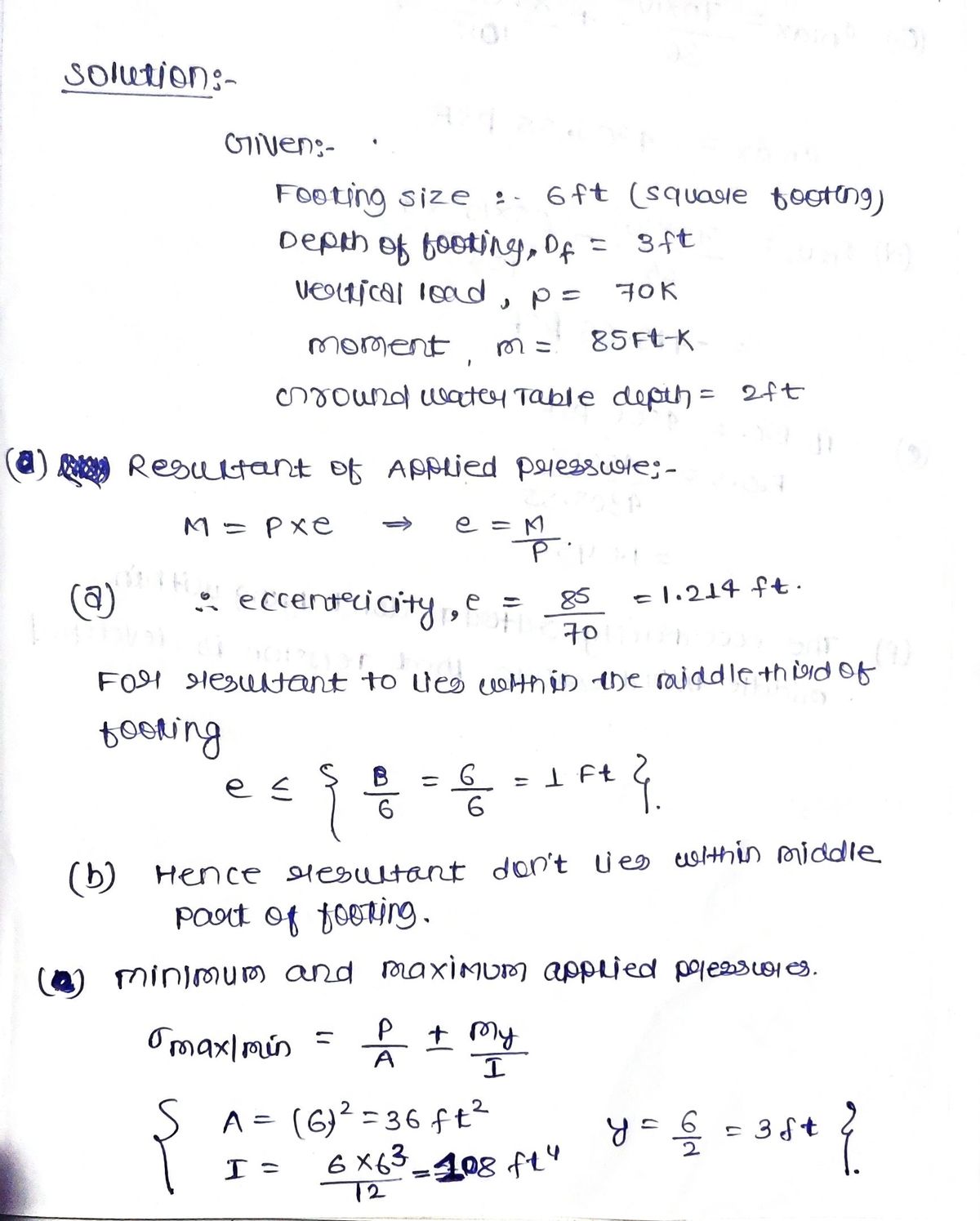resultant of applied pressure act within the middle third of the footing? (c) Compute the minimum applied pressures in psf. (d) Compute the maximum applied pressures in psf. (e) If the foundation soil’s ultimate bearing capacity (qult) is estimated to be 4500 psf, what
1. A 6-ft square, 3-ft deep spread footing is subjected to a centered vertical load of 70 k and an
overturning moment of 85 ft-k. The overturning moment acts parallel to one of the sides of the
footing. The top of the footing is flush with the ground surface and the groundwater table is at
a depth of 2 ft below the ground surface. [Course Objective #2]
(a) Calculate the eccentricity, e, of the applied bearing pressure’s resultant, in feet.
(b) Does the resultant of applied pressure act within the middle third of the footing?
(c) Compute the minimum applied pressures in psf.
(d) Compute the maximum applied pressures in psf.
(e) If the foundation soil’s ultimate bearing capacity (qult) is estimated to be 4500 psf, what
minimum factor of safety against bearing capacity failure exists beneath the foundation?
(f) Does the design criterion for eccentricity (i.e., requiring the resultant of applied pressure
to act within the middle third of the footing) guarantee a safe design? If not, what do you
think the purpose of this eccentricity criterion is?

Step by step
Solved in 2 steps with 2 images









